Hace dos semanas subí la receta de pan de leche. Es una receta muy básica y fácil en la que se puede variar las formas y el sabor del pan. Cuando quiero acompañar alguna pasta, le añado orégano, albahaca, un poco de tomillo seco y en vez de ponerlo en el molde para pan de sandwich después del primer leudado, lo corto en 12 bolitas y así los horneo.
Otra forma de usar ésta masa es haciendo rollos de canela, uno de los panes favoritos en casa.
La receta de hoy es una adaptación de la receta de pan de leche. La diferencia es que vamos a poner un poco más de azúcar a la masa y la vamos a bañar con azúcar y canela.
Alguna vez han horneado algo con canela? galletitas con canela o una torta con canela? Guau! el olor que queda en la casa es increíble, es un olor que te relaja, un olor que te hace sentir que estás en casa y por supuesto, que sos un buen cocinero 😉 .
Este pan me trae diferentes recuerdos. Uno, del tiempo que pasamos en USA con mis suegros. Despertar a la mañana, venir a la mesa y oler éste pan de canela tostado, ver cómo la mantequilla se derrite y es absorbida por el pan. Para mí eso es todo lo que necesita. Pero he visto que mi suegra le pone un poco de canela y azúcar encima, tengo que probar algún día.
La otra memoria que me trae es más la textura del pan; el primer bocado que comí de éste pan, me llevó inmediatamente a mi niñez. No recuerdo el nombre del pan, sólo recuerdo que una tía compraba y traía a mi casa de vez en cuando. Era uno de mis favoritos, pero no era algo que comía tan seguido. La costra un poco crocante, la miga se derrite en la boca y después de ese primer bocado y la memoria que me trajo, por supuesto que tenía que sumergirlo en mi té, como lo hacía cuando era niña 🙂
Two weeks ago, I uploaded this sweet bread recipe. It’s a basic and easy recipe where you can change the shape and the flavor of this bread. If I want to serve it with pasta, I add oregano, basil, a bit of dried thyme, and, instead of baking it in the bread loaf mold after the first rising, I divide the dough in 12 balls and I bake them in that shape.
Another way of using this dough is making cinnamon rolls, one of the favorite breads at home. Today’s recipe is an adaptation from sweet bread’s recipe. The difference lies in that we’re adding some more sugar to the dough and coating with sugar and cinnamon. Have you ever baked with cinnamon? Snickerdoodles, or maybe cinnamon coffee cake? Wow! The smell that lingers in the house is amazing, a smell that relaxes you, that makes you feel at home and, of course, that you're a great cook ;).
This bread brings me different memories. One, of the time we spent in the US with my in-laws. Waking up in the morning and smelling this toasted cinnamon bread, seeing how the butter melted and was absorbed by the bread. To me, that’s all it takes. But I saw my mother-in-law sprinkling some sugar and cinnamon on top, so, I’ve got to try that one day.
The other memory this bread brings to me is about the texture, when I took the first bite, it took me straight to my childhood. I can’t remember which bread was it, only that my aunt bought it and brought it home from time to time. It was one of my favorites, but we hadn’t eaten it very often. The crust was a bit crunchy, the crumb melts in your mouth, and, after that memory it brought back, I had to dunk it on my tea, as I did when I was a girl :).
Esta vez usé mi panificadora para mezclar y amasar la masa. Preparar la masa y dejarla leudar por una hora.
This time, I used my bread making machine to mix and knead the dough. Make the dough and let rise for an hour.
En una superficie enharinada, estirar la masa en un forma de un rectángulo (78x20cm / 30x8 pulgadas más o menos). Pintar con la mezcla del huevo batido, dejando una punta sin pintar de unos 3cm / 1 pulgada. Espolvorer la mezcla de azúcar y canela.
In a flat surface sprinkled with flour, stretch the dough into a rectangle (about 78x20 cm/30”x8”). Paint with egg, leaving a 3cm/1 inch point without brushing. Sprinkle with sugar and cinnamon.
Enrollar la masa dejando la parte sin pintar y pinchar con la palma de la mano para sellar.
Roll up the dough and press a bit with your hand to seal.
Poner la masa en un molde engrasado y con la parte doblada hacia abajo.
Cubrir el molde con film y dejar reposar por 30 minutos. Mi horno tarda como 20 minutos para llegar a los 200 °C / 400°F, así que lo enciendo pensando en los 30 minutos de reposo que necesita la masa.
Put the bread in a greased mold with the folded part facing down. Cover it with plastic wrap and let rest for 30 minutes. My oven takes about 20 minutes to reach 200ºC/400ºF, so I heat it considering the 30 minute rest the dough needs.
Antes de hornear, pintar el pan con el resto del huevo. Hornear el pan a 200°C / 400°F por 5 minutos, luego bajar la temperatura a 175°C / 350°F y seguir cocinando por 35 minutos más. En total va estar en el horno por 40 minutos.
Before baking, brush the loaf with the rest of the egg. Bake at 200ºC/400ºF for 5 minutes, then lower the temperature to 175ºC/350ºF and keep baking for 35 more minutes. It will be in the oven for 40 minutes.
Receta:
2 cucharitas de levadura seca (puede ser la instantánea también)
2 cucharas de agua a temperatura ambiente
1 cucharita de azúcar
1 taza de leche entera con 1 huevo (colocar el huevo a la taza primero y luego llenar con leche) todo a temperatura de ambiente
2 Cucharas de crema de leche (yo uso la crema de leche que viene en lata o crema ácida) a temperatura de ambiente
1-½ cucharita de sal
1/ 4 taza de azúcar
3-½ tazas de harina común (437.5 gm - 15.43 oz.)
Relleno:
1 huevo batido con 2 cucharitas de agua
½ taza de azúcar
2 Cucharas de canela molida
1. En un recipiente pequeño poner 2 cucharas de agua, 1 cucharita de azúcar y la levadura. Dejar reposar por unos 8 minutos.
2. Mientras la levadura leuda, mezclar los ingredientes líquidos en un recipiente y los ingredientes secos en otro recipiente.
Para los ingredientes líquidos, primero poner el huevo y luego llenar el recipiente con leche hasta tener una taza de líquido, luego añadir la crema de leche y batir con un tenedor hasta que esté bien mezclado.
3. Agregar la levadura y los ingredientes líquidos a la harina y mezclar.
Poner la masa en una superficie plana, y enharinar las manos. La masa va a ser un poco pegajosa, la harina va ayudar a que no se pegue en las manos. Hacer esto cada dos minutos o cada vez que empiece a pegarse en tus manos.Con ésta masa prefiero no poner harina en la mesa y sólo poner en mis manos. Amasar por 10 minutos.
4. Poner la masa en un recipiente engrasado (usar aceite neutro), darle la vuelta a la masa para que esté cubierta de aceite también y cubrir con film.
Dejar reposar en algún lugar de la casa donde se mantiene caliente. Yo suelo poner mi masa en la lavandería. Esta vez reposó por una hora. Cuando hace frío suele tardar una hora y media a dos horas. Lo que se quiere es que la masa haya crecido el doble.
5. Después de que la masa leude, en una superficie enharinada, estirar la masa en un forma de un rectángulo (78x20cm / 30x8 pulgadas más o menos). Pintar con la mezcla del huevo batido, dejando una punta sin pintar de unos 3cm / 1 pulgada. Espolvorer la mezcla de azúcar y canela.
Enrollar la masa dejando la parte sin pintar y pinchar con la palma de la mano para sellar.
6. Poner la masa en un molde engrasado y con la parte doblada hacia abajo.
Cubrir el molde con film y dejar reposar por 30 minutos. Mi horno tarda como 20 minutos para llegar a los 200 °C / 400°F, así que lo enciendo pensando en los 30 minutos de reposo que necesita la masa.
7. Antes de hornear, pintar el pan con el resto del huevo. Hornear el pan a 200°C / 400°F por 5 minutos, luego bajar la temperatura a 175°C / 350°F y seguir cocinando por 35 minutos más. En total va estar en el horno por 40 minutos.
Recipe:
2 teaspoon active dry yeast or instant yeast
2 tablespoon room-temperature water
1 teaspoon sugar
1 cup of whole milk with 1 egg (place the egg first and then fill the rest of the cup with milk), both room-temperature.
2 teaspoon cream (I use the canned kind or sour cream), room-temperature.
1-½ teaspoon salt
¼ cup sugar
3-½ cups all purpose flour (437.5 g - 15.43 oz.)
Filling:
1 egg, whisked, with 2 teaspoon water
½ cup sugar
2 teaspoon cinnamon
1. In a small bowl, pour water, yeast and a teaspoon of sugar. Set aside for 8 minutes.
2. While the yeast is activating, mix wet ingredients in a bowl and dry ingredients in another. For wet ingredients, place the egg first and then fill the rest of the cup with milk, then add the cream and mix well until combined.
3. Add the yeast and the liquid ingredients to the flour. Mix well.
Put the dough on a flat surface and cover your hands in flour. This dough will be a bit sticky, so the flour will prevent it from being stuck to your hands. Do this every two minutes or every time you feel it too sticky. When working with this dough, I prefer putting flour in my hands rather than sprinkling it on the countertop. Knead for 10 minutes.
4. Place the dough in a greased bowl (use neutral, vegetal oil), flip the dough to cover it in oil, and cover with plastic film.
Set aside in a warm place. I generally leave it in the laundry room. This time, I let it rise for an hour. When the weather is cold, it takes between an hour and a half and two hours. It will be ready by the time it has doubled its size.
5. After the dough rose, place it on a floured flat surface and stretch it in a rectangle shape (about 78x20cm / 30”x8”). Brush dough with the egg and water mixture, leaving a 3cm/one inch point without brushing. Sprinkle the cinnamon and sugar mixture. Roll the dough and press with the palm of your hand to seal.
6. Put the bread in a greased mold with the folded part facing down. Cover it with plastic wrap and let rest for 30 minutes. My oven takes about 20 minutes to reach 200ºC/400ºF, so I heat it considering the 30 minute rest the dough needs.
7. Before baking, brush the loaf with the rest of the egg. Bake at 200ºC/400ºF for 5 minutes, then lower the temperature to 175ºC/350ºF and keep baking for 35 more minutes. It will be in the oven for 40 minutes.

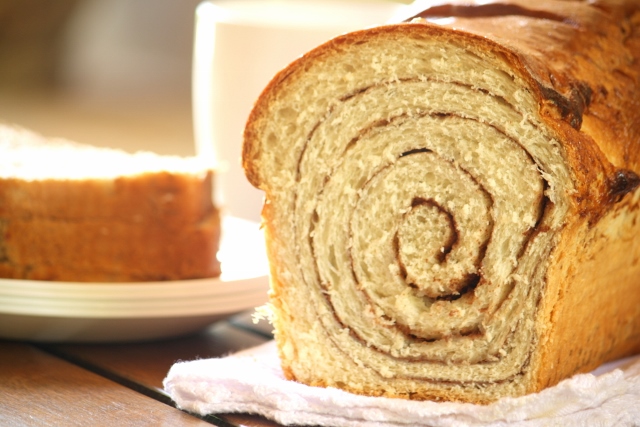
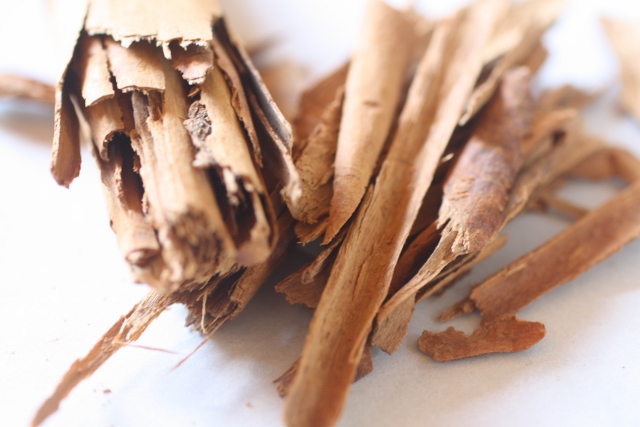
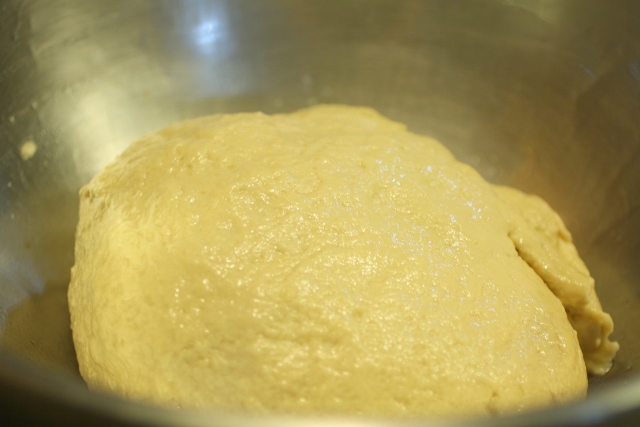
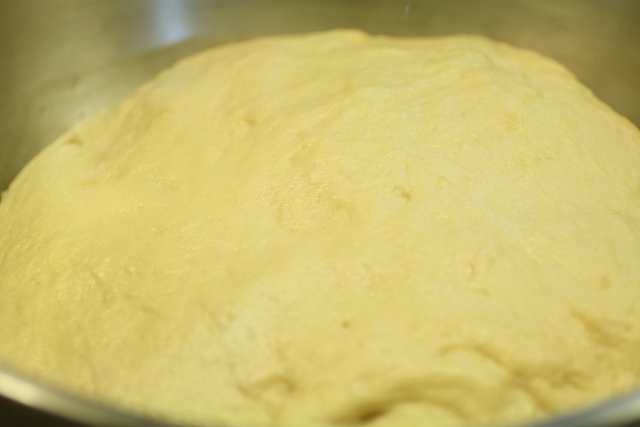
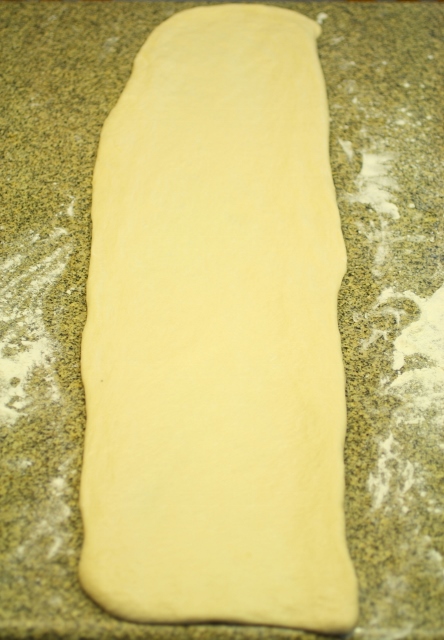
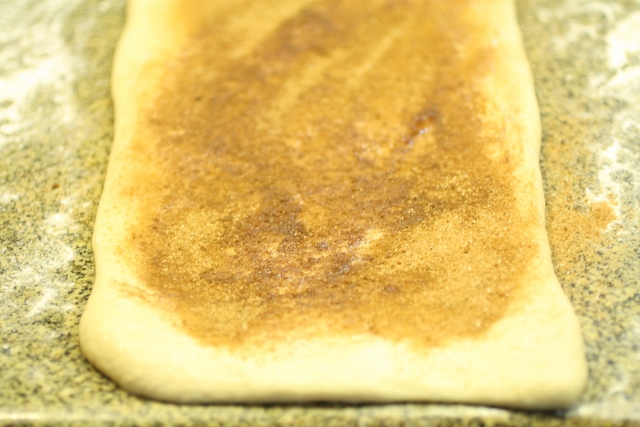


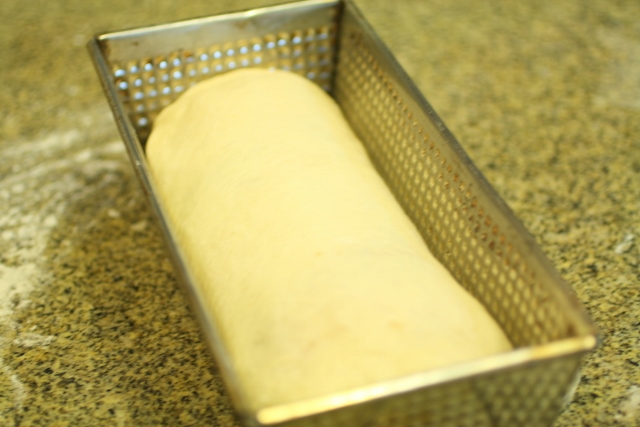

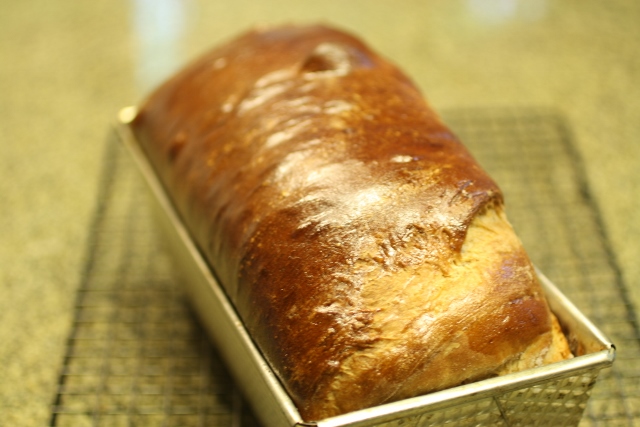




Leave a Reply